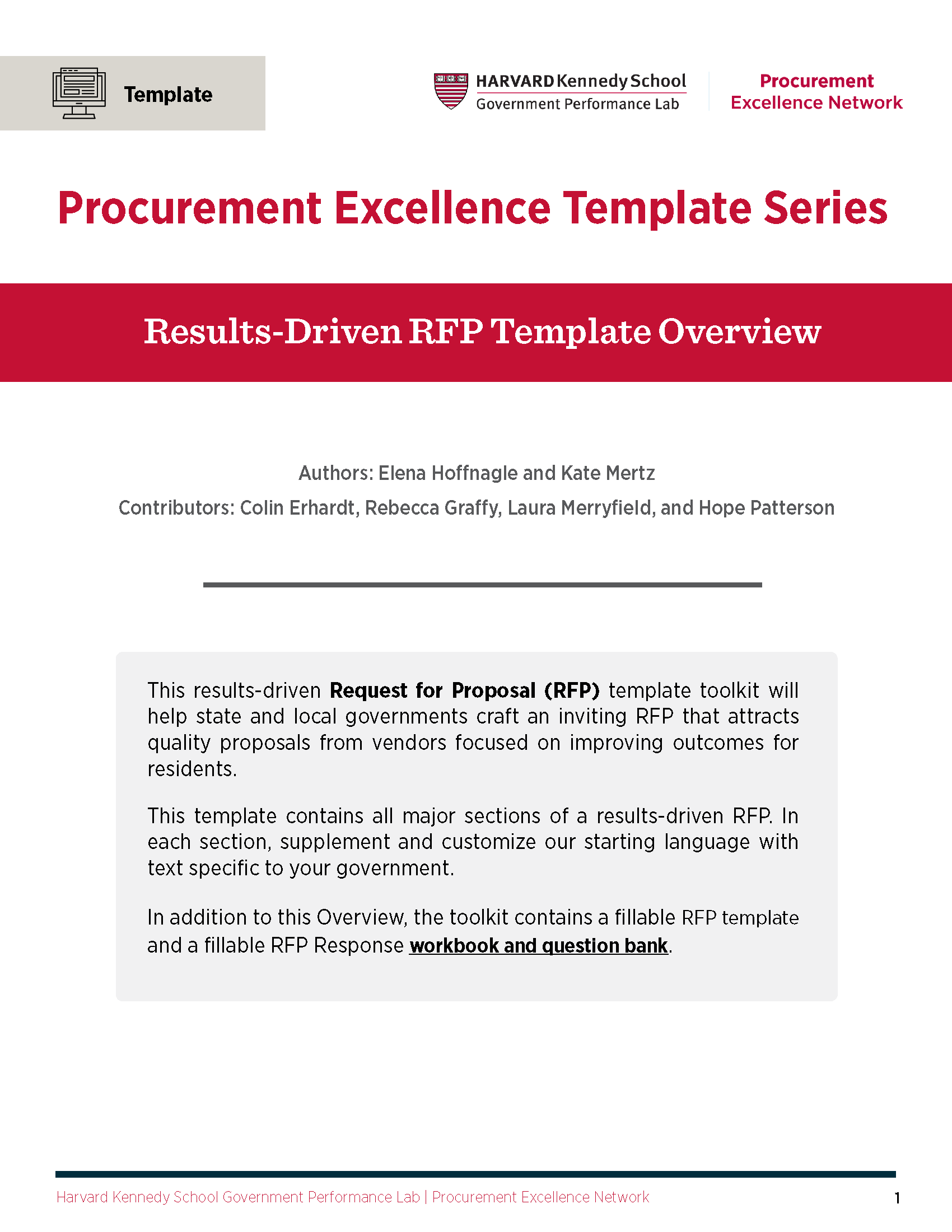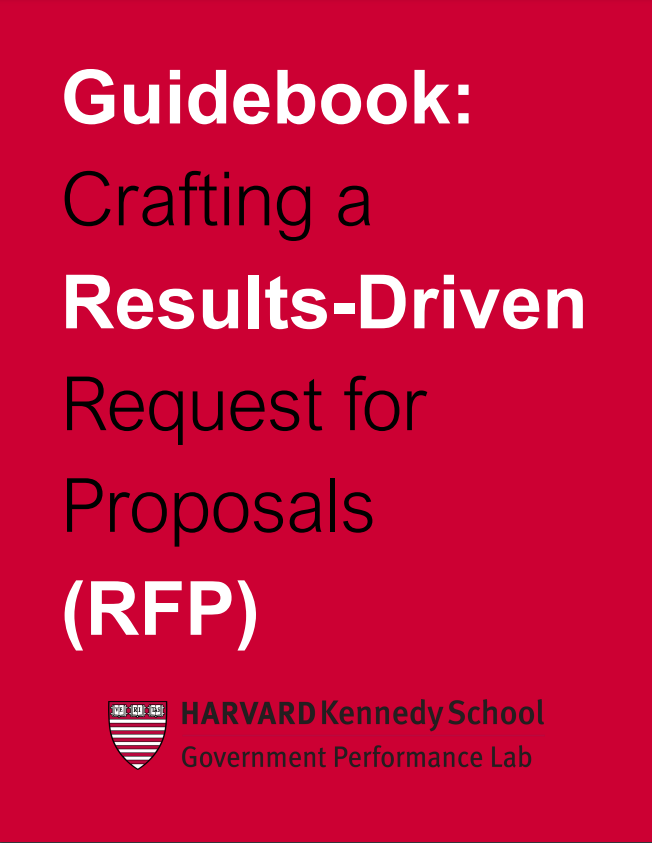
The decision what to buy and who to buy it from is a pivotal moment in any procurement. For public officials, deciding who to contract with for a big, long-term project can feel akin to buying your first new car, committing to a house, or choosing your life partner! The decision of who to contract with also will not only directly impact how a government is able to deliver services to residents, it will also mean that some vendors—and not others—are awarded a government contract and allocated public resources. For this reason, the decision must also be open, fair, and transparent.
This how-to guide will offer suggestions for approaching proposal evaluation as a tool for systematic decision-making. You'll learn how to customize your approach to proposal evaluation along standard dimensions at all stages of the evaluation, while still balancing fairness, consistency, openness, and efficiency.

Writing a Request for Proposals (RFP) can feel daunting. As you face an upcoming need for goods or services, you may be tempted to fall back on a previously issued version of an RFP, simply mimic what a peer city or state has done, or renew an existing contract - even though you know you could probably find a better-performing vendor. But an RFP is the foundation for achieving strategic goals and improving outcomes for residents through contracting, and such an opportunity shouldn't be wasted. This template, which pairs with our RFP Template, provides a model for a response workbook that accompanies an RFP document. Using a response workbook can be a valuable tool to help proposers have a structured way to submit their proposal to your government and can make evaluation of proposals far easier. You'll also find sample questions in this template that you can ask of proposers in your RFP.

Writing a Request for Proposals (RFP) can feel daunting. As you face an upcoming need for goods or services, you may be tempted to fall back on a previously issued version of an RFP, simply mimic what a peer city or state has done, or renew an existing contract - even though you know you could probably find a better-performing vendor. But an RFP is the foundation for achieving strategic goals and improving outcomes for residents through contracting, and such an opportunity shouldn't be wasted. This results-driven RFP template will help you craft an inviting RFP that attracts quality proposals from vendors.

The resources contained in this guidebook will help public sector organizations leverage procurement to improve the outcomes of government-funded programs and services, including by writing results-driven requests for proposals (RFPs) and by better managing the RFP development process. Through the eight modules, procurement professionals can walk through the RFP process step by step, from early planning through managing a contract. Each of the modules contains best practices for that specific topic area and examples from other jurisdictions as well as discussion questions and planning prompts.

The Procurement Excellence Network is an initiative of the Harvard Kennedy School Government Performance Lab (GPL). Housed at the Taubman Center for State and Local Government at the Harvard Kennedy School, the GPL conducts research on how governments can improve the results they achieve for their citizens. An important part of this research model involves providing hands-on technical assistance to state and local governments.
With support from Bloomberg Philanthropies.